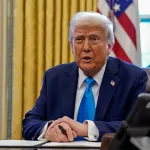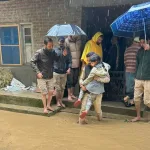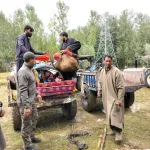The rise of Islamic apps, virtual mosques, online sermons, artificial intelligence, Islamic wearables, and smart devices is revolutionizing traditional practices
CLOSING THE TECHNOLOGICAL DIVIDE
The introduction of the Gutenberg printing press in the mid-15th century brought about a profound transformation in Europe, ushering in an era of scientific, political, and cultural innovation known as the Renaissance in Western Civilisation. However, in stark contrast, the Islamic world, once a center of learning and civilization, during the Age of Translation in the Abbasid Period, experienced stagnation and decline while the West was experiencing its Enlightenment. This discrepancy can be attributed in part to the differing attitudes toward the printed book between the two civilizations.
In the Islamic world, the introduction of the printing press by Ibrahim Müteferrika in the early 18th century marked a significant moment in the history of the Islamic world but it was met with skepticism and resistance. This rejection can be understood through an examination of religious, cultural, technological, economic, and political factors.Müteferrika, a Hungarian-born Ottoman diplomat and scholar, recognized the potential of the printing press to revolutionize the dissemination of knowledge and information within the Ottoman Empire.
One of the primary sources of resistance to Müteferrika’s printing press came from religious and cultural circles. In Islam, the handwritten word, particularly when transcribing the Quran, holds immense spiritual and artistic significance. Calligraphy was not only a means of preserving sacred texts but also a form of devotion in itself. The introduction of the printing press threatened to diminish the reverence associated with handwritten texts, as mechanically reproduced copies lacked the spiritual essence imbued by a human scribe.
Furthermore, there were concerns that mass-produced texts could lead to errors or distortions in the transmission of religious teachings, thereby undermining the authority of religious scholars and leaders.Technologically, the complexity of the Arabic script posed significant challenges for early movable type printing technology. Unlike the Latin alphabet, which consists of relatively simple characters, Arabic script features characters that change shape depending on their position within a word. This complexity made the printing process more cumbersome and less efficient, further discouraging its widespread adoption.
Economically and socially, Müteferrika’s printing press faced opposition from traditionalists who were invested in the existing manuscript culture. Manuscript production had long been a flourishing industry within the Islamic world, supported by a network of skilled scribes and calligraphers. The introduction of the printing press threatened the livelihoods of these artisans and the cultural prestige associated with handmade manuscripts. Additionally, the lack of demand for mass-produced books among the relatively limited literate class further hindered the acceptance of Müteferrika’s printing press.
Politically, Müteferrika’s initiative encountered resistance from Ottoman authorities who were wary of the potential social and religious upheaval that widespread printing could bring. Sultan Ahmed III granted Müteferrika the exclusive privilege to print non-religious books in Arabic script, but this privilege was met with suspicion by religious scholars and elites who feared the democratization of knowledge and the erosion of their authority.
In sum, Müteferrika’s introduction of the printing press in the early 18th century faced skepticism and resistance from religious, cultural, technological, economic, and political quarters within Ottoman society. Despite Müteferrika’s vision of modernization and cultural advancement, the printing press struggled to gain widespread acceptance within the Islamic world during this period.
Top of Form
Bottom of Form
In contrast, Europe embraced the printed book as a powerful tool for disseminating knowledge, information, and ideas. The mass production and distribution of books lowered costs and increased availability, facilitating the exchange of knowledge and stimulating intellectual curiosity and creativity. The printed book was instrumental in the advancement of science, technology, industry, democracy, nationalism, and romanticism in Europe.
This delay in adopting the printing press helped preserve traditional ways of life but also slowed knowledge distribution and modernization, making it difficult for the Islamic world to keep up with other civilizations.This rejection stands as one of the primary factors that contributed to the ascent of European Colonial powers and the decline of the last Islamic Caliphate. The missed opportunity to adopt the printing press is considered one of the great missed opportunities of economic and technological history. In Western Europe, the press provided a host of new economic and educational opportunities that were simply unthinkable before the press.
In conclusion, the disparities in attitudes towards printed books reflect broader cultural, religious, technological, economic, and political differences between European and Islamic civilizations in the early modern period.While Europe embraced the printed book as a catalyst for progress and modernity, the Islamic world’s rejection of this innovation contributed to its decline and isolation. Contemporary efforts are underway to bridge the historical gap in the Islamic world through technological advancements.
There’s a growing acknowledgment of the significant influence of the Islamic Golden Age or the Age of Translation on technological advancements in Medieval Europe. There are also numerous examples of Islamic inventions that have shaped our world, such as the development of the decimal place value system, the first systematic study of algebra, and considerable advances in geometry and trigonometry. Therefore the recognition aims to foster a deeper understanding of history and acknowledge the cultural exchanges that have shaped technological development.In recent decades, there has been a concerted effort to elevate the status of science and technology in Muslim-majority countries. This involves discussions on integrating Islamic values with scientific education and research, aiming to encourage innovation and progress.
There is also a growing trend of scientific papers published by Muslim-majority science systems. The increasing trend in quantity and scientific influence of publications is promising. Countries like Turkey, Iran, Malaysia, Saudi Arabia, and Pakistan are consistently differentiating themselves in area-based publication analyses and overall trends. Also, there have been calls by Muslim scholars and clerics to bridge the gap between Islam and science, especially for young Muslims, by harmonizing science and Islam in education.
Moreover, there have been notable instances of technological innovation within the Islamic world and the diffusion of innovations through it. Advancements in mathematics, astronomy, medicine, engineering, and other fields have contributed to the progress of science and technology.The emergence of digital technology and the internet has played a crucial role in bridging the historical gap. Access to digital resources has enabled individuals in the Islamic world to engage with a wealth of information and knowledge, facilitating their own scientific and technological advancements.The Islamic world has become a hub for technological innovation, fostering advancements in various sectors. Countries like the United Arab Emirates (UAE) have established themselves as pioneers in cutting-edge technologies, such as artificial intelligence, robotics, and renewable energy.
The rise of Islamic apps, virtual mosques, online sermons, artificial intelligence, Islamic wearables, and smart devices is revolutionizing traditional practices. These digital platforms facilitate Quranic learning and recitation, assist Muslims in performing daily prayers, offer courses on Islamic studies, Arabic language, and religious knowledge, and enable Muslims worldwide to connect for communal prayers and religious events. This digital approach democratizes access to education, fostering a more informed and connected Muslim community.
These ongoing efforts underscore a commitment to closing the historical gap and promoting the advancement of science and technology in the Islamic world.
(Author is a Delhi-based columnist, writer, and Consulting Editor for The New Indian. She researches reform, heretic traditions in Islam, and the lives of Muslim dissenters)








